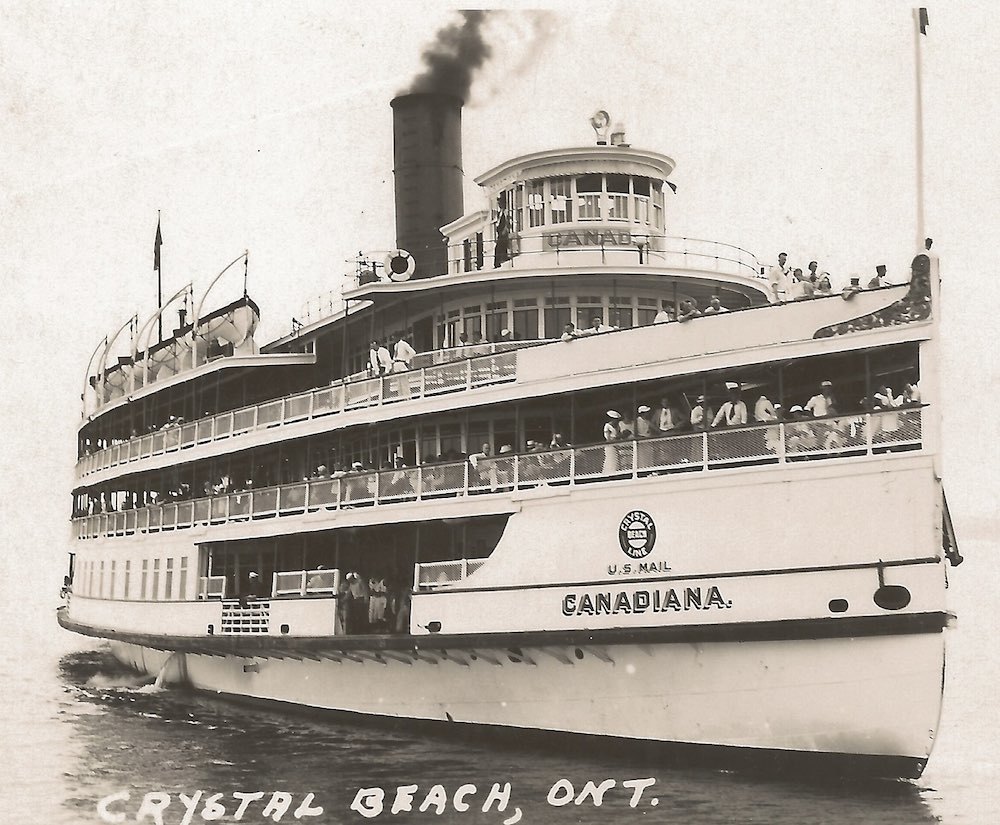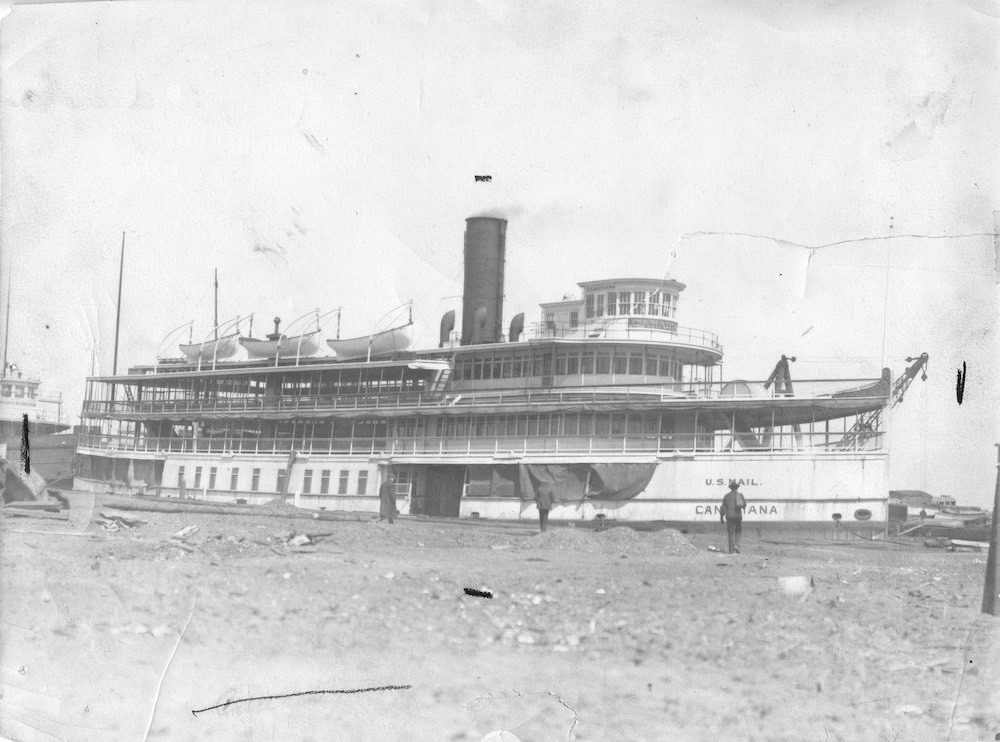
After a long and fruitless battle to turn a 70-year-old steamship into a floating restaurant in the Flats, Jim Vinci’s project came to a quick and dramatic end. Within 20 minutes the S. S. Canadiana sank to the bottom of Cuyahoga River on February 17, 1982.
The S. S. Canadiana was originally built in 1910 to ferry passengers from Buffalo, New York to the Crystal Beach Amusement Park in Crystal Beach, Ontario. It made the circuit up to six times a day for over 40 years. However, by the 1950s revenue declined. Hastening its retirement, a fight broke out onboard the Canadiana on May 30, 1956. Dubbed “The Crystal Beach Boat Race Riot”, the initial fight between teenagers started two days earlier at Crystal Beach Amusement Park before eventually continuing onto the Canadiana’s voyage back to Buffalo. The Canadiana retired from the Crystal Beach circuit later that year.
After retirement, the ship was eventually bought by Jim Vinci of Cleveland in June 1968 for $3,600. Jim Vinci had opened his restaurant, Diamond Jim’s, in the Flats two years prior in 1966. Despite a bomb going off next to Vinci’s car at the restaurant in 1967, Vinci shrugged it off, intent on building a nightlife empire in the Flats. He claimed the bomb was a case of mistaken identity and kept expanding. His next step was the conversion of the Canadiana into a floating restaurant.
After putting a reported $500,000 into the boat’s restoration, Vinci cited a heart attack and difficulty meeting city building codes for the eventual stagnation of the Canadiana’s conversion. Finally, around 11am on February 17, 1982, the Canadiana sank to the bottom of the Cuyahoga River at its mooring at West 3rd Street and Stones Levee. Water reached all the way up to the first deck of the three-deck ship. It was apparently quite the spectacle. The Cleveland Plain Dealer quoted a customer of Jim’s Steakhouse who, having watched the scene unfold over lunch, exclaimed, “This is like Disneyland. Let’s refloat the ship tonight and do it all over tomorrow.”
When asked what he thought had caused the boat to sink, Vinci said that the Cleveland Electric Illuminating Co. was dumping potash into the river which harmed the structural integrity of the ship. In response, CEI said that they did not use potash nor was potash used in producing electricity. Whatever the cause, the Canadiana was never to become a Flats destination.
For the next two months the ship sat at the bottom of the Cuyahoga River while Vinci insisted he would soon begin salvaging the boat. However, by April, no attempts had been made and the situation was becoming dangerous. Collision Bend, near where the boat sat, necessitated shippers to make an almost 90-degree turn when navigating the river. The power needed to make that turn was said to be able to generate enough suction on the Canadiana that it might drag it out into the river creating a dangerous navigational hazard. Vinci was unable to come up with the $250,000 to move the ship and relinquished it to the Army Corps of Engineers to begin the long process of refloating and moving the boat. Finally, on June 21, 1983, over a year after it had originally sunk, the Canadiana left Cleveland for good when it was towed to Ashtabula to be refurbished by the “Friends of the Canadiana.”
Two years after the Canadiana left Cleveland, its former owner, Jim Vinci, and his assistant Edward Doubler, were found shot in the back of the head in Diamond Jim’s on March 29, 1985. There were no signs of a break-in and no cash or valuables had been stolen. David L. Hicks, a detective at the scene, was quoted in the Cleveland Plain Dealer saying, “It was definitely a hit on Vinci.” The case was never solved.
As for the Canadiana, it was eventually stripped for restoration in 1988 and towed to Port Colborne, Ontario, about ten miles west of Crystal Beach, for drydocking. By 2004 the restoration project had run out of funds and the ship was scrapped. Parts of the Canadiana were saved including the engine, which was displayed at the 50th anniversary rally of the Western New York Gas & Steam Engine Association, as well as some of the interior such as a wooden buffet now at the Port Colborne Historical and Marine Museum.
Images




